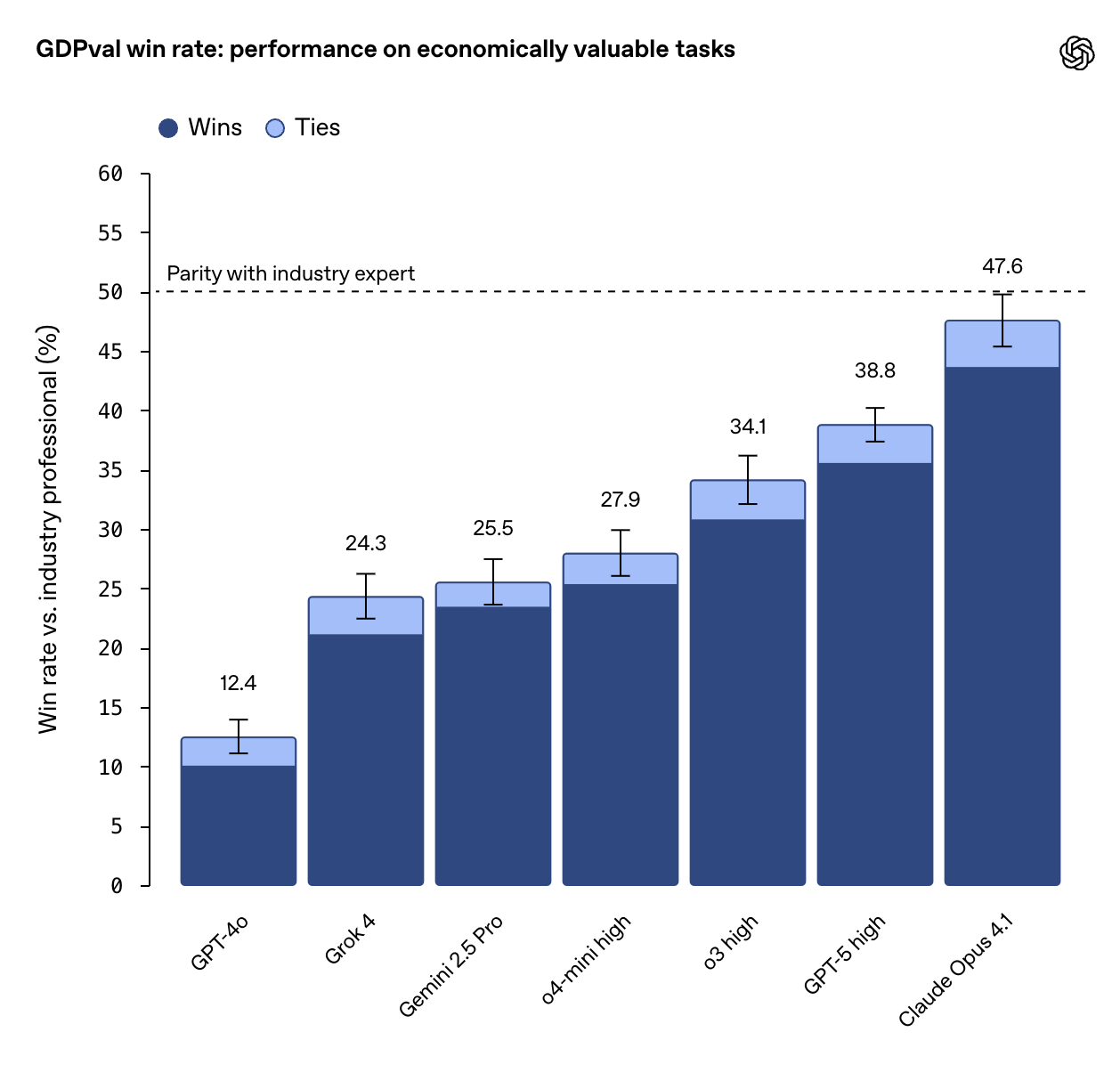🔮 Exponential View #543: AI vs youth; flying wind turbines; quantum bond trading, OpenAI’s movie & gene therapy ftw++
Where leaders make sense of AI and the future
“The level of deep insight into technological trends and forward-looking info you share is unmatched. No one is doing it like you.” – Susan, a paying member
Workforce realities
AI is likely already outperforming 50–70% of your workforce on defined tasks. OpenAI’s new test, GDPval, shows models nearly on par with industry experts who average 14 years of experience. If models are as good as or better than experts in ~47% of tasks, they are probably closer to 70–80% against junior staff with only two or three years on the job. In other words, your junior analysts, entry-level lawyers and new marketing associates are already lagging behind AI.
We’ve been tracking this shift for a while. Most recently, back in January, we noted in “Jevons and the automated developer” that AI was reshaping entry-level work in software: machines could handle more of the rote tasks, but human oversight and architectural judgment still mattered. By summer, new evidence was coming in. Last month we looked at Erik Brynjolfsson’s research showing that early-career hiring in AI-exposed sectors was falling, precisely as demand for experienced workers rose.
What we have is a wicked problem… Benchmarked AI is a credible competitor to human task work. Let’s assume that it is a major driver of firm decisions right now. What does this mean?1
First, firms pause junior hiring as managers figure out what can be automated to deliver cost cuts without having to get rid of anyone. Second, companies start pruning non-adapters. Accenture is explicit on this: retrain for AI or be “exited,” even as it hires selectively into AI roles. Other firms will do the same. Third, experience still confers an edge. People with strong domain knowledge and experience can better prompt and judge models’ work.

